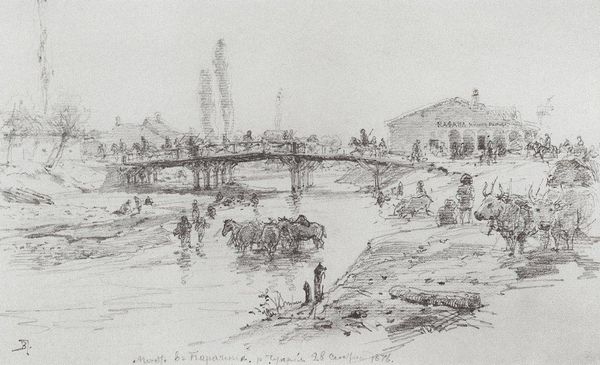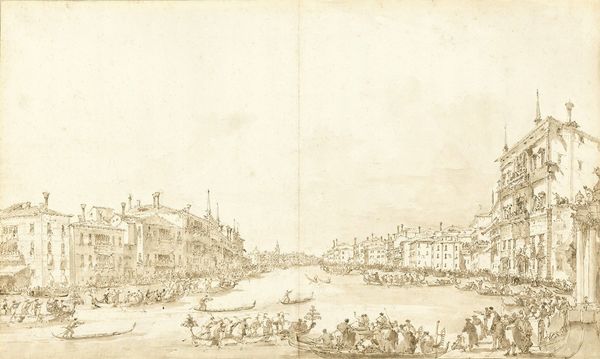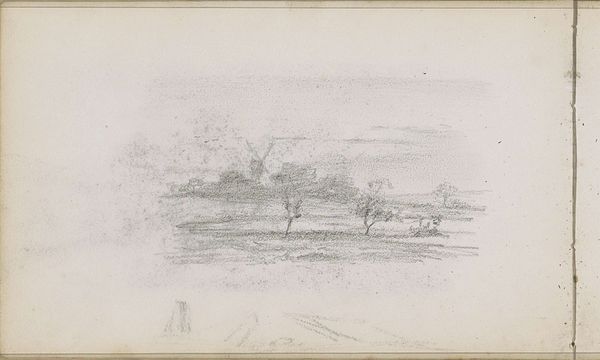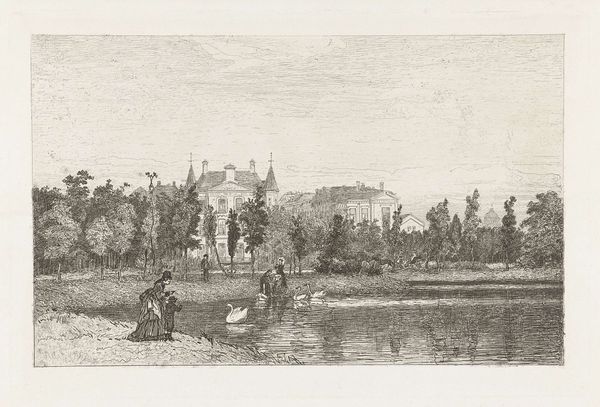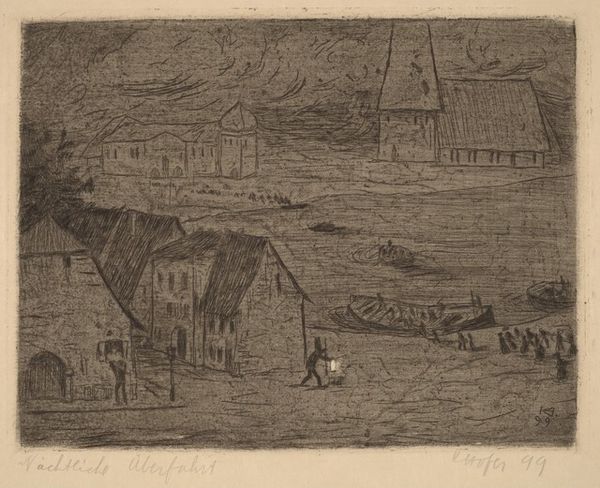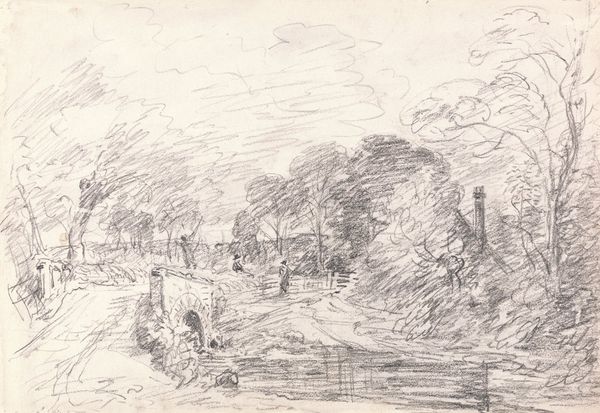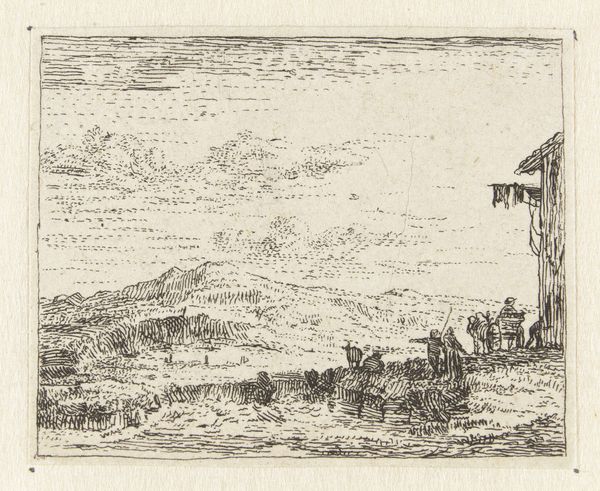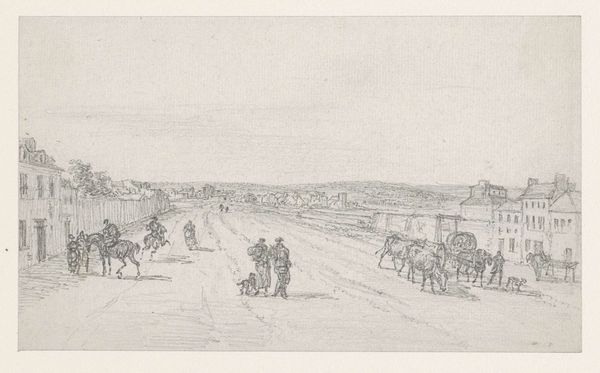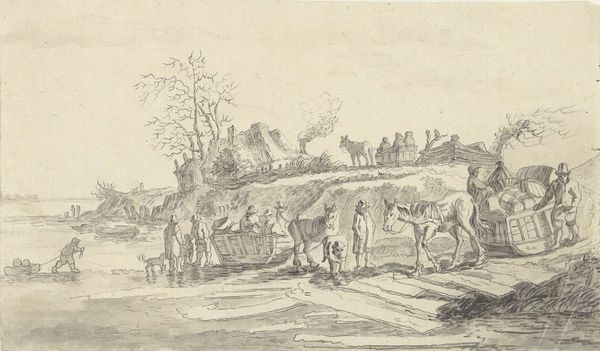
drawing, print, pencil, graphite
#
drawing
# print
#
pencil sketch
#
landscape
#
winter
#
river
#
sketch
#
pencil
#
water
#
graphite
#
russian-avant-garde
#
cityscape
Copyright: Public domain
Curator: Boris Kustodiev's 1919 work, "Winter festivities on the river", is a captivating glimpse into early 20th-century Russia, rendered with graphite and pencil on paper. It really catches a fleeting moment in time, doesn't it? Editor: Fleeting is right. It's almost a ghost of a scene, like a memory half-forgotten. The graphite gives it such a light, ephemeral quality. It feels both festive and fragile. What kind of labor went into creating this? Curator: Kustodiev, despite suffering from worsening health due to a spinal tumor around this time, remained incredibly productive. This piece offers insight into Russian cultural traditions amidst the revolutionary period. His perspective, though, seems somewhat removed, almost nostalgic for a past era of such events. Editor: Right, look at all that smoke billowing from the city in the background! But the attention is on these leisure activities and traditions. The materials speak to this: the easy availability of pencil and paper allowed him to quickly capture this social landscape, making it a record but maybe an idealized one. Curator: Absolutely. The choice of medium would also align with the Russian avant-garde's broader experimentation with different techniques, questioning what defined 'high' art in the period. He's observing everyday life rather than portraying elites, though these festivals involved the whole community. Editor: It's really the 'everydayness' that strikes me. You can imagine him just sketching away as families skated and sledded nearby. Though these are handmade sketches, in terms of print, the repetitive quality inherent makes them objects for widespread viewing. Curator: Indeed. There’s an intriguing blend of societal commentary and intimate observation within this unassuming drawing. A window into a pivotal period. Editor: Definitely. Kustodiev’s sketch has given me a real insight into the materials, the way he worked and the culture that created its own visual records of the era.
Comments
No comments
Be the first to comment and join the conversation on the ultimate creative platform.
